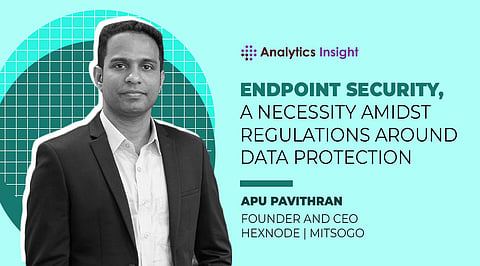

Data privacy and data protection, a.k.a data security, are considered synonymous, but a fine line differentiates them. While data security aims at protecting corporate data from insider threats and external attacks by deploying tools and policies, data privacy defines how data is collected, shared, and used. In a nutshell, there is no data privacy without data protection.
The volume of data created and handled by businesses is incomprehensible, as is the enormous responsibility that comes with it. Allegations of MNCs monetizing customer data or falling prey to data leaks are not new. However, as corporates migrate their data to the cloud, data protection has taken a new turn.
In today's fast-paced world, technological proliferation has paved the way for numerous methods that capture valuable customer data. Businesses have developed techniques and sources to record everything from personally identifiable information (PII) to client interaction with mobile applications to behavioral and attitudinal data. Many of today's tech titans have built their empires on data accumulated over time.
While users hand over their personal information to businesses, the freedom to define 'who can access what lies in their hands. It is the corporate's responsibility to protect data and respect the level of privacy stated by the user. In a nutshell, the basic elements of data protection encompass protecting data from compromise and guaranteeing data privacy.
While the pandemic scattered employees across diverse geographical locations, corporates had to ensure that their workforce had the necessary data to keep the work going. As a result, data protection techniques are expected to ensure business continuity and backup data as a security measure.
With the burgeoning importance of data privacy, governments across nations have enacted stringent laws to protect consumer data. The data privacy timeline began in late 1974 with the US Privacy Act, which has subsequently set the way for other amendments and legislation.
Since there isn't a worldwide privacy act, governments have taken over the responsibility to develop rules to safeguard their citizens. For example, while CCPA (California Consumer Privacy Act) applies to California's residents, GDPR (General Data Protection Regulation) safeguards the rights of European nationals. India is the most recent addition to countries attempting to introduce their own data privacy laws.
Data privacy regulations have influenced how businesses acquire, preserve, disclose and analyze consumer data. While the regulation bestows consumers more control over their data, companies that fail to comply and abide by their legal commitment to protect consumer privacy may face fines. Recognizing the selling point that underlies data privacy, Silicon Valley tech giants Apple and Google have embarked on a crusade of making privacy their face. While Google is working on Privacy Sandbox, Apple has enhanced its users' control over app tracking.
In this digitalized era, with privacy concerns reaching new heights and the growing necessity to strictly adhere to data protection regulations, we may have to go beyond conventional defense mechanisms.
Ensuring that the right person has access to the right resources is a part of data security. IAM (Identity and Access Management) tools like Okta help enterprises accomplish this goal. Furthermore, IT admins are notified whenever confidential data is shared or unwarranted super admins are added.
Managing a fleet of devices and their data with a single IT administrator may be complicated. Unified Endpoint Management (UEM) solutions like Hexnode alleviate the burden by helping admins manage and secure corporate devices by imposing policies and restrictions. From device encryption to setting up passwords and application policies to completing device wipes, UEMs can perform a bulk of functions over the air. Furthermore, UEMs provides complete visibility into company assets' ownership, location, and content, enabling IT administrators to take countermeasures if things go south. UEMs also enables IT admins to configure device settings that heighten the security aspects of the device.
Data Lifecycle Management (DLM) solution is another effective way of protecting data. The tool discovers data within cloud repositories, third-party applications, and devices and classifies them based on their level of sensitivity. As a result, data remains protected in accordance with regulatory standards and enables IT admins to remediate/ destroy data as per use.
Finally, Zero Trust, the latest buzzword in cybersecurity, could be another smart practice to consider. Zero trust runs on the principle that nothing can be trusted unless verified. Hence, before being trusted with business data, ZTNA (Zero Trust Network Access) solutions rigorously validate every user, device, and connection.
While consumers entrust corporates with their data, they are entitled to their privacy. Corporate endpoints are the gateways into their data, and securing these endpoints through security solutions and government regulations may mitigate the risks. Acknowledging the importance of privacy, Bruce Scheiner (the American cryptographer, and computer security specialist) quoted, "Data is the pollution problem of the information age, and protecting privacy is the environmental challenge."
Apu Pavithran, Founder and CEO, Hexnode | Mitsogo
Join our WhatsApp Channel to get the latest news, exclusives and videos on WhatsApp
_____________
Disclaimer: Analytics Insight does not provide financial advice or guidance on cryptocurrencies and stocks. Also note that the cryptocurrencies mentioned/listed on the website could potentially be scams, i.e. designed to induce you to invest financial resources that may be lost forever and not be recoverable once investments are made. This article is provided for informational purposes and does not constitute investment advice. You are responsible for conducting your own research (DYOR) before making any investments. Read more about the financial risks involved here.
